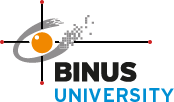PROGRAM DESIGN METHODS (4 Credits)
Learning Outcomes :
On successful completion of this course, student will be able to: Explain program design method; Apply the process of program developing; Design the application using program design method; Demonstrate the use of program design method; Explain the object oriented design; Design the application using the object oriented design.
Topics :
- Program Design, Pseudocode, and Developing an Algorithm (L)
- Selection and Repetition Control Structure, Pseudocode Algorithms Using Sequence, Selection and
- Repetition (L)
- Program Design and Pseudocode (T)
- Developing an Algorithm (T)
- Array Processing and First Steps in Modularisation (L)
- General Algorithms for Common Business Problems (L)
- Selection Control Structures, Repetition Control Structures, and Pseudocode Algorithms Using
- Sequence, Selection and Repetition (T)
- Array Processing and First Steps in Modularisation (T)
- Communication Between Modules, Cohesion, and Coupling (L)
- General Algorithms for Common Business Problems and Communication Between Modules, Cohesion,
- and Coupling (T)
- Communication Between Modules, Cohesion, and Coupling and Quiz (T)
- Review Simple Structured Program Design (L)
- Introduction to Object Oriented and Use Case (L)
- Introduction to Object Oriented (T)
- Use Case Diagram (T)
- Activity Diagram (L)
- Class Relationship and Class Diagram (L)
- Identifying Functionality : CRC Cards and State Diagrams (L)
- Use Case and Activity Diagram (T)
- Identifying Functionality : CRC Cards and State Diagrams (T)
- Class Diagram and State Diagram (L)
- Interaction Diagram (L)
- Implementation Diagram (L)
- Class Diagram, State Diagram and Interaction Diagram (T)
- Implementation Diagram & Quiz (T)
- Review of Object Oriented Development (L)
Published at :



SOCIAL MEDIA
Let’s relentlessly connected and get caught up each other.
Looking for tweets ...